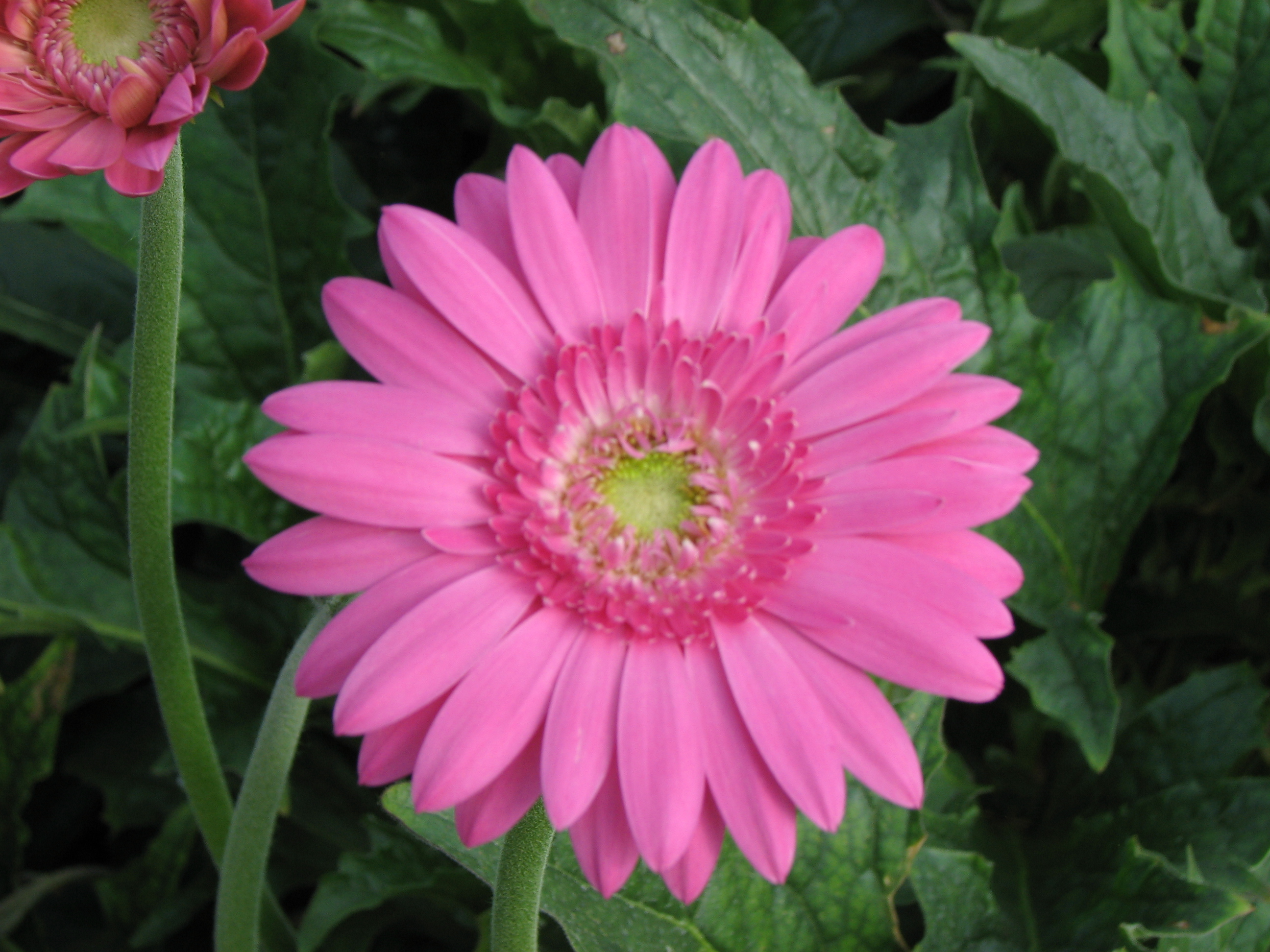Flowers/ornamentals
Overview
Key pests in ornamentals and cut flowers tend to be two spotted mite (TSM), western flower thrips (WFT), greenhouse whitefly (GW), aphid spp., sciarid flies (fungus gnats) and shore flies. Shore flies tend to be more of a problem in cut flowers, especially crops such as gerbera, lillium, calla where the flies leave unsightly frass spots on flowers. Silverleaf whitefly can cause major problems in crops such as gerbera, pointsettia. Bulb mites are more specifically problems of cut flowers grown from bulbs or tubers such as lillium, tuberous begonia, freesia, gladioli, or daffodils.
Controlling pests in ornamentals and cut flowers can pose many problems to growers. In the case of most ornamentals, such as nursery stock, the whole plant is being sold and the tolerance for any sign of damage or presence of pests at the time of sale is at best very low. In most ornamental nurseries, there are a wide range of different plant species being grown together in a relatively small area. Some plants may be very attractive to a certain pest, while other species close by are not preferred hosts. However, there can often be a "spill over" effect of pests from one host to other plants just due to overcrowding.
Flowering plants may be attractive to some thrips species, and from there the thrips can spread to other nearby but less attractive plants.
If possible, growers should try to group plant varieties susceptible to certain pests together, rather than having them spread through a nursery. This makes them easier to monitor and can be treated similarly.
Due to high levels of chemical resistance in a number of key pests in ornamental and cut flower crops, making the transition from a chemical program to an IPM program is often the most difficult step. Many of the chemicals that are used in ornamentals and cut flowers can have very long lasting residual activity against some beneficial mites and insects. Some of these residues can last for up to 12-16 weeks. During this period growers will need to control pests in the crop with selective chemicals/practices that will not interfere with the establishment of beneficials after the waiting period has expired.
It is recommended that growers consider making a change to an IPM program when new plant material is first propagated and preferably when a whole house is able to be emptied at one time. This decreases the chance of chemical residues on plants prior to the introduction of beneficials, and reduces the amount of cross contamination of pests from an older crop to a new crop.
If a grower is not producing their own plant material, and sources plant material from a propagation nursery, it is very important that they know exactly which chemicals have been used on those plants, and when, prior to the introduction of beneficials.
The leaf structure of many ornamental and flower crops, and/or the lack of an adequate pollen source is not suitable for the ongoing reproduction of some beneficials, so in these cases the use of banker plants and trap plants may be employed to help beneficials establish in a crop and reproduce.
Due to the often mixed plantings in flower and ornamental crops and very low damage tolerance, a more general and preventative IPM program is recommended. Multiple control agents may be used in a crop against a single pest group, to give a wider range of pests/stages controlled.
Release rates
Hypoaspis mix (thrips pupae, sciarid fly larvae, bulb mites)
2 L/1000m² (30 mites/m²) at the time of transplanting of new material. Repeat this dose after 2 -3 weeks. If thrips/sciarid pressure is or has been high on the property, use 4l Hypoaspis mix/1000m²/application. In propagation areas 1 litre/50m² may be required.
Encarsia (greenhouse whitefly, silverleaf whitefly)
In whitefly susceptible varieties, introduce 2-4 wasps/m² preventatively on a weekly basis. In less attractive varieties introduce 1-2/m² weekly. In hotspots introduce from 10-20/m² depending on severity of problem.
Eretmocerus (greenhouse whitefly)
Rates will vary depending on the crop and time of year. Eretmocerus should be distributed evenly around the extremities of the crop and also concentrated into known hotspots.
Preventative: 0.5-1 wasps/m² weekly.
After whitefly detection: 2-3/m² weekly for at least 4 applications, or apply higher rates in hot-spots until parasitism is at least 80%. In hotspots, release 10/m².
Orius (western flower thrips, onion thrips)
Introduce 2-4/m² onto basil/chilli/capsicum/alyssum banker plants as soon as the bankers are flowering. Repeat this in 2-3 weeks time. In varieties with low thrips/virus tolerance use 10-20 Orius/m² split between several introductions.
Aphid parasite mix (green peach aphid, cotton aphid, potato aphid, greenhouse potato aphid)
Preventative: 0.15/m² weekly
After aphid detection: 0.5-1/m²/week for at least 3 weeks. Return to preventative rate once control is achieved.
Persimilis (two spotted mite)
Introduce 1-2 mites/m² preventatively through the whole nursery to susceptible plant species. If mites are already present, introduce 4-5/m² through the whole nursery and up to 20/m² in hotspots.
Hotspots: release 10/m².
Californicus (two spotted mite)
In hot/dry or outdoor situations where conditions do not favour Persimilis, release Californicus at 50-100mites/m² (10-20L/ha). Release twice, 14 days apart.
Cucumeris (thrips)
For WFT sensitive crops, use repeated regular doses in conjunction with Hypoaspis aculeifer, and Orius in banker plants. Releases every 2-4 weeks may be required at 100-160 mites/m² (25-40L/ha).

Related products
- Aphelinus
- Aphid banker plants
- Aphid parasite mix
- Californicus
- Colemani
- Cucumeris
- Dalotia
- Encarsia
- Eretmocerus
- Eretmocerus
- Ervi
- Hypoaspis
- Lailae
- Lindorus
- Monty
- Orius
- Orius banker plants
- Persimilis
- Pheromone traps
- Thripobius
- Yellow sticky traps & hand lenses
Related pests
- Broad mite
- Bulb mite
- Cotton/melon aphid
- Fungus gnat
- Glasshouse potato/foxglove aphid
- Green peach aphid
- Greenhouse whitefly
- Onion thrips
- Potato aphid
- Red scale
- Shore fly
- Silverleaf whitefly
- Two spotted mite
- Western flower thrips





